Everything you need to know about the Moorish lawn
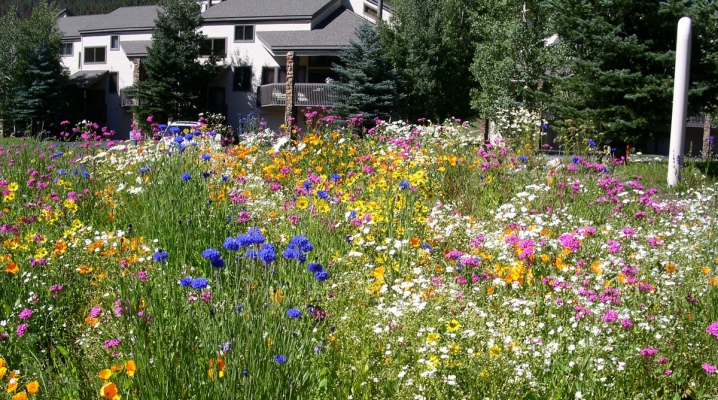
Nothing pleases the eye more than flowers - they are beautiful, bright, aesthetic and, no doubt, deserve their place in gardening. That is why the Moorish lawn is always popular. It looks like a meadow sown with spring grasses and flowers.

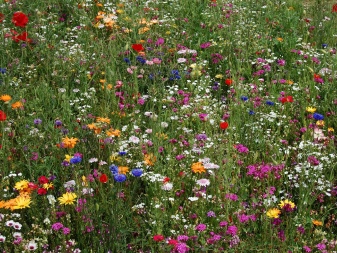
Peculiarities
First, let's say a few words about the history of the appearance of the Moorish lawns. Residents of the Old World of the 7th-8th centuries, who visited the Cordoba Caliphate during the period of Muslim rule in Spain, described with great enthusiasm the amazing beauty of their palace and park complexes. This is not surprising, because in those days a lot of attention was paid to the design of lawns. Specially trained people included wild meadow elements in the garden design concept. This idea quickly caught on and the guests of the country liked it so much that it quickly spread to other states. Several centuries later, the Moorish lawn has not lost its relevance and continues to be widely used in landscape design.

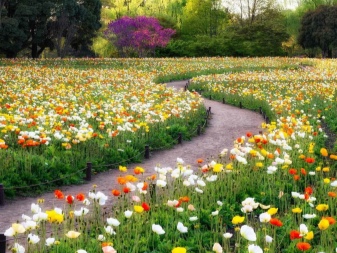
This version of the lawn is optimal for those homeowners who do not have much desire or time to regularly wield a lawn mower in their area. The creation of a Moorish canvas allows you to get a small lawn, which pleases with its bright flowering throughout the warm season.
To create a lawn, special grain mixtures are used. Most of them are cereals - they are responsible for the formation of a dense base. Flowering crops account for about a third of the total sowing volume.
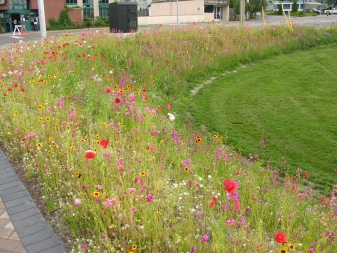
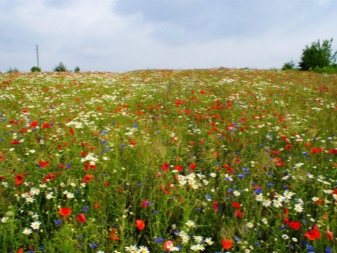
In any flower shop, ready-made mixtures for flowering herbs are sold, they can go on sale under the names "flowering" or "alpine" lawn. If desired, everyone can create a grass mixture for such an unusual lawn with their own hands.
To do this, you need to take any lawn culture as a basis and add seedlings of several types of flowers to it to your liking.
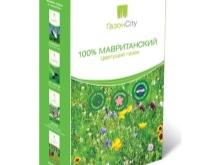
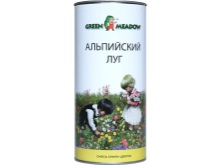
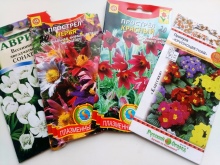
Advantages and disadvantages
Many summer residents and owners of their own country houses with great pleasure plant small lawns in the Moorish style on their backyards. However, there are those who perceive this idea with distrust. That's why it is worth figuring out what are the advantages and disadvantages of such a landscape solution.
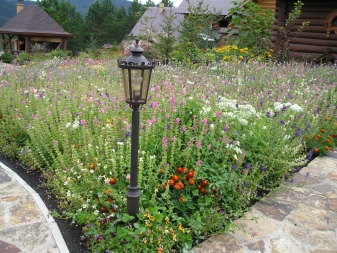
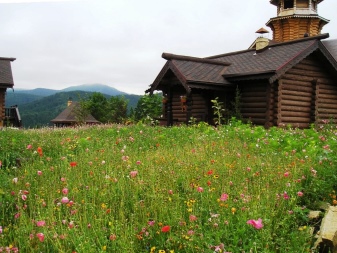
The advantages of a Mauritanian lawn include the following factors.
- Brightness of colors and exceptional decorative effect. This lawn is a real carpet of meadow grasses and flowers of all shades, and you can always choose the ornament yourself. Depending on the composition of the soil mixtures, you can get both a motley picture and a monochrome design.
- Possibility of using soil mixture in areas with poor soil. As a rule, the plants included in the flowering lawn are usually unpretentious. They can successfully grow and develop even in places where all other cultures simply die.
- Undemanding care. Unlike traditional parterre and ordinary lawns, a flowering meadow needs mowing no more than once or twice a summer. These plants are resistant to drought and frequent rainfall.
- Continuity of flowering. A properly selected herbal mixture for a flowering meadow will allow you to enjoy bright foliage and a variegated lawn for several months. After some plants have faded, others immediately bloom.Such a lawn not only looks decorative throughout the summer season, it also looks different every week.
- Self-renewal. The Moorish lawn is a practical long-term solution for the landscape. Once you have sowed the seeds, you can no longer do this work in the future. Annuals at the end of the growing season scatter their seedlings, due to which the lawn sows itself the next year.
Even if small bald spots appear, they can always be hidden by fast-growing grasses or annual flowers.
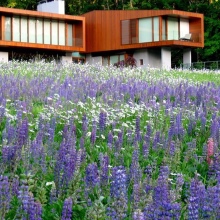
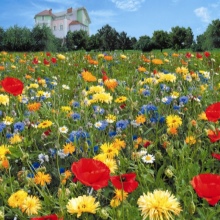

Of the minuses, several points should be highlighted.
- The originality of aesthetics. Despite its exceptional natural range, the Moorish lawn should not be used for planting the entire garden area. The reason is that it looks unkempt most of the year, so it is best to pick up a long shot of a traditional lawn for it.
- The complexity of the selection of seeds. Homeowners with little experience with flowering plants may not properly formulate the herbal mixture. They often do not take into account the period and duration of flowering, the height of the grasses, and frost resistance. This leads to the fact that some crops simply kill the rest or freeze out with the onset of the first cold weather.
- Low functionality. You can play, run and walk on a traditional lawn. The Moorish lawn is not used for active pastime, since the flowers do not have resistance to trampling. Such a lawn can only be admired, and this creates significant restrictions on its use, especially when the site has a small area.
- The need to control the size of the lawn. Despite the unpretentiousness of the Moorish lawn, you still need to control its condition. Without supervision, you can become the owner of a real wild-growing meadow, especially if the seeds are planted in fertile land. That is why it is recommended to sow forbs in small glades-islands.
- Risk of allergies and insect bites. The flowers used to grow the Moorish lawn are usually honey plants. Accordingly, they attract not only butterflies, but also horseflies, wasps and bees - few people like to be near biting and buzzing insects.

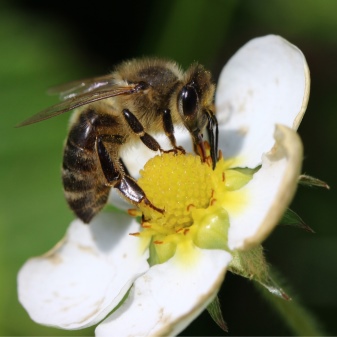
How can it be?
The most widespread are the following types of lawns.
Undersized
In this case, the grass mixture is based on the seeds of exceptionally low-growing grasses and flowers.
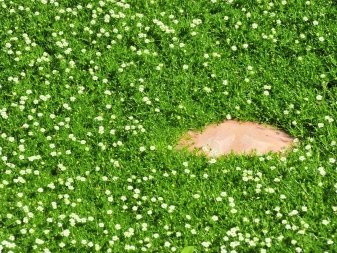
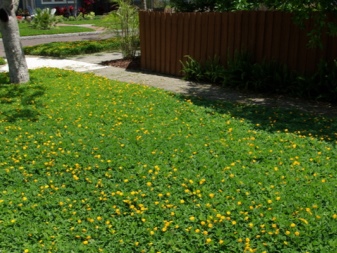
High
These Moorish lawns include flowering plants and grasses that are over 30 cm in height.

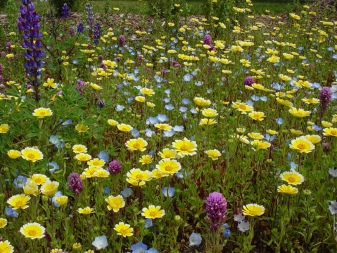
Plain
The lawn is in monochrome, the flowers in it give inflorescences of the same shade. The height of perfection is considered to be a monochrome lawn, which changes its color several times in one season.
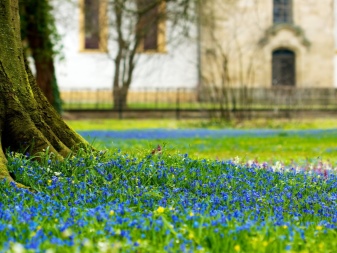
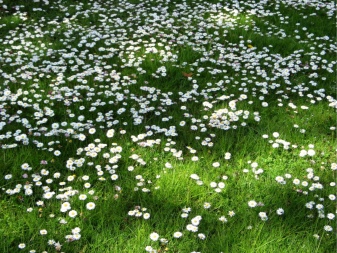
Multicolor
Variegated, multi-colored lawns with a variety of herbaceous and flowering plants. Typically, this lawn includes yellow, red and blue paints.

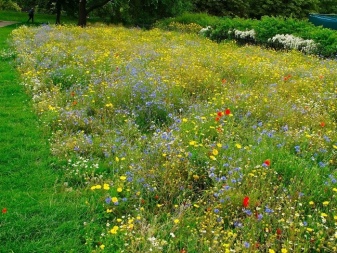
Tip: Even if you plan to design a one-color meadow, take crops for it with different flowering periods. Otherwise, the Moorish meadow will very quickly lose its attractiveness and take on the appearance of a semi-abandoned area.
Herbal mixture composition
If you decide to compose the herbal mixture yourself, then you need to remember that first of all you are planting a lawn, not a flower bed. That is why the main volume should be occupied by herbs and cereals. Flowers are selected based solely on personal preferences, most often they use red poppies, white garden daisies, blue cornflowers and some types of flax.
Variegated, colorful grass mixtures are especially popular. Seeds are selected so that when the flowering of some varieties ends, the flowering of others immediately begins. A correctly composed mixture for a Moorish meadow gives the first flowering at the end of March and continues to delight with its rich colors until the onset of cold weather.To achieve the desired result, it can include up to 40 varieties of flowering plants.
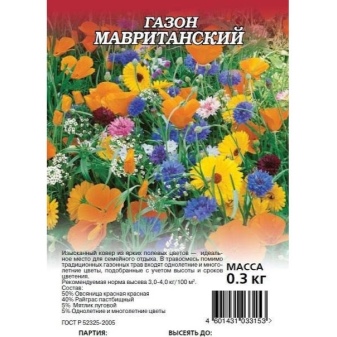
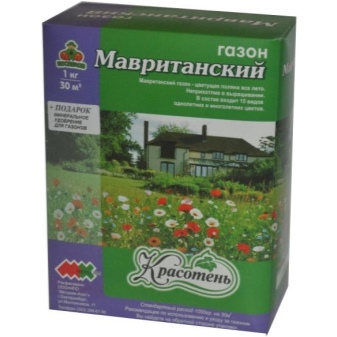
Typically, a variegated carpet is formed from the following cultures.
- cornflower - this is one of the most common plants, its inflorescences of deep blue color harmoniously set off forbs. Of the advantages of culture, it is necessary to highlight its ability to self-seed and self-renew.
- Bell - a frost-resistant, undemanding plant with beautiful multi-colored inflorescences. It has a long flowering period from the beginning of summer until the onset of the first cold weather.
- Linen - a beautiful and unpretentious annual. It is presented in a large varietal variety, which gives interesting colors.
- Eschsholzia - perennial crop, part of the Mauritanian meadow. In our strip, it is most often grown as an annual. Forms spectacular flowering bushes. Cupped flowers in a variety of colors.
- Chamomile meadow - one of the most common inhabitants of meadows and meadows in natural nature, which is why it is so often used in flowering lawns. The plant is unpretentious, gets along well with most cereals and flowering crops.
- Oriental poppy Is a classic Moorish plant. It blooms profusely for 2-3 weeks with large single flowers of bright red color.
- Gypsophila - unpretentious culture from the Clove family. It gets along with all annuals and perennials.
- Ryegrass - one of the fastest growing lawn grasses, it is distinguished by increased vitality. Grows well on all types of soils.
- Bluegrass Is a popular lawn grass. The time of active growth lasts from the moment the snow melts to the onset of frost.
- Fescue Is a popular perennial cereal.
It is distinguished by the ability to adapt to any cultivation characteristics.

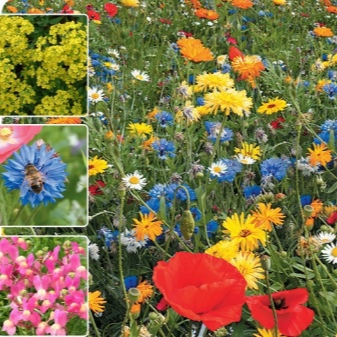
Seeding Algorithm
Sowing work begins with pre-sowing soil preparation, it is best to do this in the second half of summer or even in autumn - by this time most of the weeds will shed their seeds. The plot of land must be plowed or dug up to the depth of the shovel handle, and then covered with agrofibre. At the end of spring, the covering material is removed and dug again, removing the roots of the weeds. The soil is well compacted with a small roller. If there is no such device, you can use any metal barrel or piece of metal pipe. If the land is too poor, additional compound fertilization may be required.

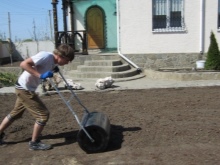
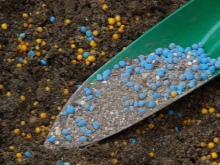
After that, you can proceed directly to sowing seeds, usually done at the beginning of summer. Seedlings are taken at the rate of 50-60 g per 1 m2 and mixed with purified river sand in a ratio of 1 to 3 - this way you can achieve more uniform shoots. The land should be watered before sowing.
Seeds are buried in the ground 3-5 mm. Sowing too deep will slow down the emergence of the first shoots.
After sowing is completed, the soil surface must be rolled with a roller and compacted, otherwise the seeds will start to wash out during watering. The lawn is watered daily, and in hot weather - twice a day. If all the necessary conditions are met, seedlings will appear in 7-10 days.

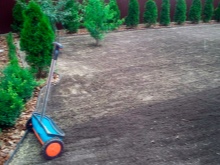
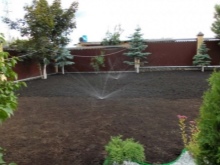
There is another sowing technique, but in this case, the consumption of seeds increases significantly. Its essence boils down to the fact that the seed is scattered over the prepared area along the longitudinal and transverse lines. Then it is leveled with a rake, embedded in the ground, rolled and watered.
We draw your attention to the fact that with the spring planting of such a lawn, most of the perennials will bloom only in the second year, in the first summer, the grasses and flowers will intensively increase their root system. With autumn sowing, flowering can be achieved as early as next summer.
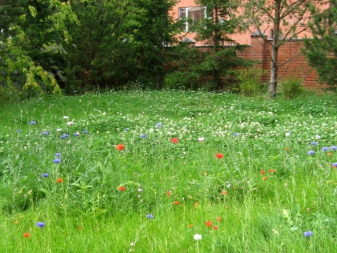
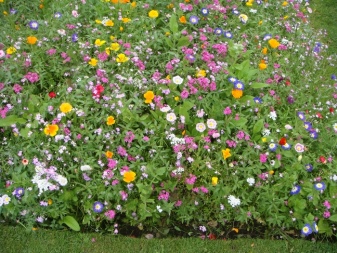
Care rules
In order for a blooming lawn to decorate your site for as long as possible, it needs appropriate care.Taking care of a young meadow has some peculiarities.
It must be mowed twice during the growing season.
- The first time - at the end of May, when cereal grasses begin to grow actively - this will slightly slow down their development and allow slow-growing flowers to grow stronger.
- The second mowing is carried out immediately after the flowering of the grasses. The mowing height should be at least 8 cm. The cut grass should be removed, but this should not be done immediately - let it lie for 3-4 days in the old place, this time is enough for the flowers to scatter all their seeds into the ground. This technique helps to preserve the species diversity of the Mauritanian planting.
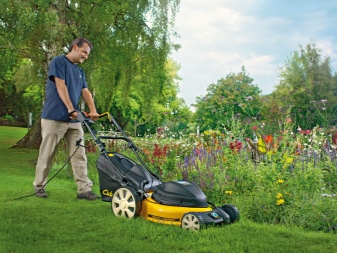
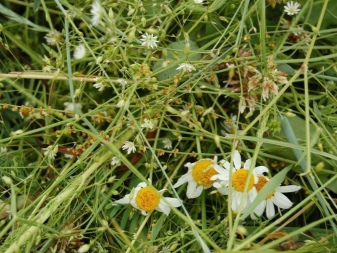
In subsequent seasons, the first mowing is performed after flowering and seeding of spring flowering plants, and the second - immediately after the flowering of autumn flowers.
In all other respects, caring for a lawn is no more difficult than for other horticultural crops.
- He needs timely watering and weeding. You can only weed such a lawn manually - this is one of the disadvantages of such a landscape solution.
- Watering frequency should be adjusted according to the weather. Irrigation is carried out only in the morning or evening hours.
- A couple of times a season, you can fertilize the lawn with special complex fertilizing.


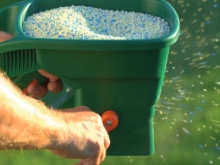
Examples in landscape design
According to gardeners' reviews, the Moorish lawn looks like an imitation of the natural expanse of fields. Such a design perfectly matches the desire of any modern person for everything natural and natural.
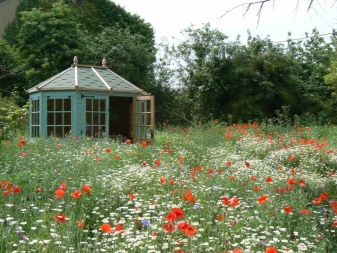

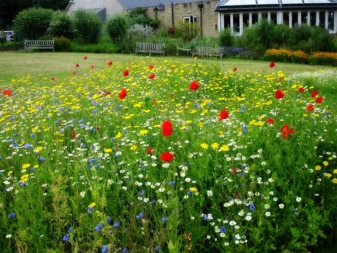
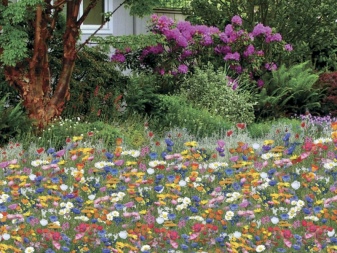
For information on how to make a Moorish lawn, see the next video.



































































The comment was sent successfully.